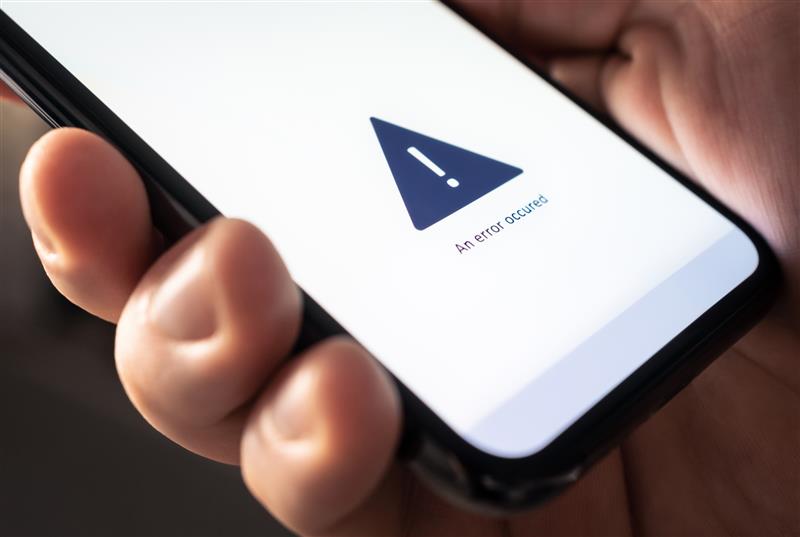




Eric DeGrass
February 21st, 2025
Executive Summary
Cybersecurity risk management has traditionally focused on mitigating software vulnerabilities—flaws that can be directly exploited by attackers. However, an often-overlooked reality is that system outages and disruptions themselves create vulnerabilities, even when they stem from non-security software defects. IT teams have limited control over vendor defects, making proactive tracking essential. Any risk mitigation strategy that addresses cybersecurity vulnerabilities must account for both security flaws and operational defects that can lead to outages. System failures weaken security postures, introduce compliance risks, and create opportunities for attackers to exploit confusion and downtime.
This post offers a balanced view of these often-over-looked risks from a cybersecurity perspective, offers a concise set of requirements to effectively and appropriately meet those requirements and an overview of how BugZero helps organizations bridge this gap with both a free offering and a scalable, automated enterprise service.
Cybersecurity risk management has long been synonymous with mitigating software vulnerability risk—flaws that can be directly exploited by attackers to gain unauthorized access, execute malicious code, or compromise data. However, an often-overlooked and under-appreciated reality is that system outages and disruptions themselves create vulnerabilities, even when they are not caused by a security-related defect.
This means that non-security software defects—bugs that don’t create an exploitable attack vector but can trigger an outage—must still be accounted for in cybersecurity risk management. Any time organizations assess and mitigate cybersecurity vulnerabilities, they need to address both:
Software vulnerabilities (flaws that can be directly exploited by attackers).
Non-security software defects (bugs that lead to system disruptions, creating secondary vulnerabilities).
The challenge is growing. Organizations are becoming increasingly dependent on third-party software and managed services deeply embedded in hybrid infrastructure. IT teams have limited visibility and control over third-party defects, making proactive tracking essential.
Operational Resilience is a material risk category on its own. Even without direct security implications, system outages wreak havoc on reputation, revenue, and compliance obligations.
This article does not take on this broader topic. It focuses narrowly on the cybersecurity considerations stemming from non-security (operational) flaws in third-party software.
Modern IT ecosystems are built on an expanding mix of third-party SaaS, embedded software, cloud services, and outsourced infrastructure. This complexity means that:
More third-party code runs in critical systems than ever before.
IT has no direct control over identifying or remediating vendor operational bugs.
Traditional security tools focus only on direct vulnerabilities, ignoring stability risks.
Cybersecurity risk management frameworks focus on patching security vulnerabilities to prevent direct exploits. Many practitioners (and the databases and feeds they rely upon) overlook non-security software defects, even when those defects have the potential to result in business-critical outages.
This gap creates hidden operational risks that are not classified as cybersecurity vulnerabilities but can still create a vulnerable state when a system fails.
System outages, whether caused by a software defect, human error, or infrastructure failure, put an organization at risk. Even if the outage itself is not security-related, the resulting chaos and operational instability create new opportunities for bad actors.
Cybercriminals actively watch for unplanned outages to exploit organizations while they are in recovery mode
Incident response teams are under pressure, making mistakes more likely
Weakened security posture—temporary fixes often bypass access controls, disable MFA, or override key security policies
Increased social engineering risks—employees and IT teams in crisis mode are more susceptible to phishing and deception
Failure to patch properly—organizations often struggle to apply fixes consistently when facing vendor dependencies or complex hybrid architectures
Simply put: An outage is not just an operational incident—it is a security event.
As reliance on third-party software and managed services grows, so does regulatory scrutiny. Regulations that once focused on security vulnerabilities now require operational resilience as well.
DORA (Digital Operational Resilience Act, EU) – Requires financial institutions to ensure IT resilience, including vendor software risks
NIST Cybersecurity Framework (US) – Expands focus to include operational disruptions as cybersecurity risks
UK Financial Conduct Authority (FCA) & PRA (Prudential Regulation Authority) – Mandate resilience requirements for IT systems, including vendor failures
GDPR & Data Protection Regulations – Require uptime and data integrity protections, not just security controls
Lack of visibility into vendor software defects undermines risk assessments
Inadequate resilience measures lead to non-compliance penalties
Failure to maintain uptime and data integrity results in audit failures and legal exposure
Organizations that ignore non-security software defects risk both cybersecurity threats and regulatory penalties.
Organizations cannot continue treating operational software defects as a purely IT Service Management problem—they are also a cybersecurity risk. Challenges with Traditional IT Monitoring Approaches
Security tools only track known vulnerabilities, missing operational defects that cause downtime
ITSM platforms lack centralized visibility into vendor software risks Security & IT teams work in silos, failing to connect stability risks to cybersecurity
Key Elements of a Modern Third-party Defect Tracking System
Continuous monitoring of third-party software defects (beyond just security vulnerabilities)
Integration with ITSM tools like ServiceNow for coordinated response
Automated risk assessments to prioritize defects before they cause disruptions
Security teams must recognize operational software defects as security risks
ITSM teams must collaborate with security to mitigate system failure risks proactively
Risk management must track and mitigate vendor software issues holistically
BugZero’s Free Operational Defect Database (ODD)
Publicly available database tracking known third-party operational bugs
Helps organizations understand vendor software risks before they trigger failures
BugZero Enterprise
Automated tracking & prioritization of software defects
Seamless integration with ServiceNow, ensuring defects are addressed within existing workflows
Proactive risk assessment, reducing downtime and improving security posture
System outages are cybersecurity vulnerabilities. Even when the root cause is a non-security defect, an outage creates new security risks
The overlap between operational resilience and security is growing. Organizations that fail to track operational defects put themselves at unnecessary risk
Cybersecurity risk management must evolve to include non-security software defects that threaten system availability
BugZero provides a free Operational Defect Database (ODD) for tracking third-party software risks, along with an enterprise-grade ServiceNow integration for advanced third-party operational bug tracking
IT and security leaders must take a proactive approach to mitigating third-party software risks. Explore how BugZero can help your organization strengthen its operational resilience and cybersecurity posture today.


Eric DeGrass
October 21st, 2025


Eric DeGrass
September 24th, 2025
Sign up to receive a monthly email with stories and guidance on getting proactive with vendor risk
BugZero requires your corporate email address to provide you with updates and insights about the BugZero solution, Operational Defect Database (ODD), and other IT Operational Resilience matters. As fellow IT people, we hate spam too. We prioritize the security of your personal information and will only reach out only once a month with pertinent and valuable content.
You may unsubscribe from these communications at anytime. For information on how to unsubscribe, as well as our privacy practices and commitment to protecting your privacy, check out our Privacy Policy.


Eric DeGrass
October 16th, 2025